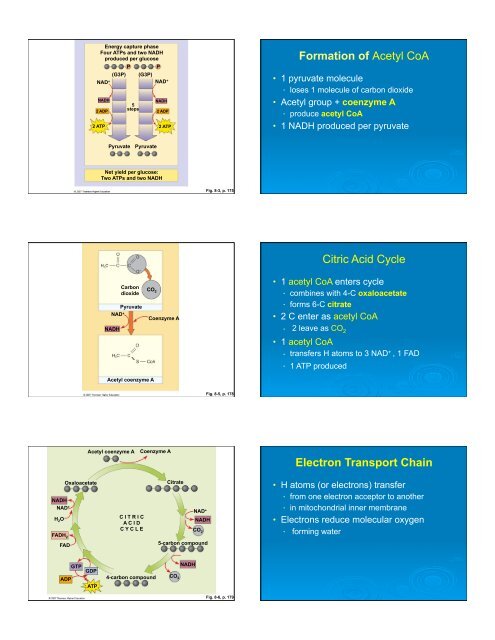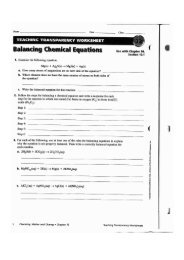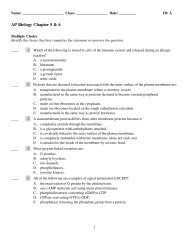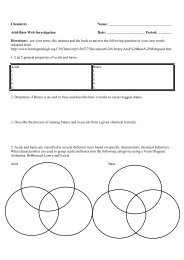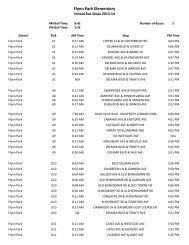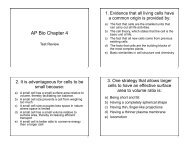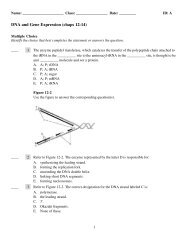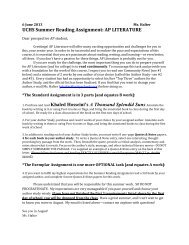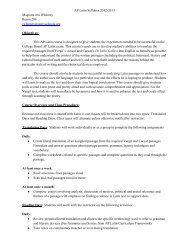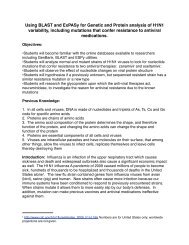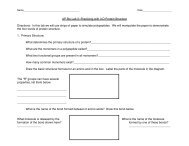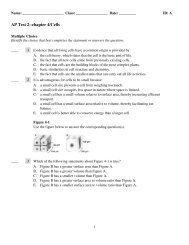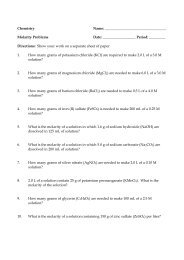How Cells make ATP: Energy-Releasing Pathways - University City ...
How Cells make ATP: Energy-Releasing Pathways - University City ...
How Cells make ATP: Energy-Releasing Pathways - University City ...
You also want an ePaper? Increase the reach of your titles
YUMPU automatically turns print PDFs into web optimized ePapers that Google loves.
<strong>Energy</strong> capture phaseFour <strong>ATP</strong>s and two NADHproduced per glucoseNAD +NADH2 ADP2 <strong>ATP</strong>(G3P)P5steps(G3P)PNAD+NADH2 ADP2 <strong>ATP</strong>Formation of Acetyl CoA• 1 pyruvate molecule• loses 1 molecule of carbon dioxide• Acetyl group + coenzyme A• produce acetyl CoA• 1 NADH produced per pyruvatePyruvatePyruvateNet yield per glucose:Two <strong>ATP</strong>s and two NADHFig. 8-3, p. 175Citric Acid CycleNAD +NADHCarbondioxidePyruvateCO 2Coenzyme A• 1 acetyl CoA enters cycle• combines with 4-C oxaloacetate• forms 6-C citrate• 2 C enter as acetyl CoA• 2 leave as CO 2• 1 acetyl CoA• transfers H atoms to 3 NAD + , 1 FAD• 1 <strong>ATP</strong> producedAcetyl coenzyme AFig. 8-5, p. 178Acetyl coenzyme ACoenzyme AElectron Transport ChainNADHNAD +H 2 OFADH 2OxaloacetateFADC I T R I CA C I DC Y C L ECitrateNAD +NADHCO 25-carbon compound• H atoms (or electrons) transfer• from one electron acceptor to another• in mitochondrial inner membrane• Electrons reduce molecular oxygen• forming waterADPGTPGDP<strong>ATP</strong>4-carbon compoundCO 2NADHFig. 8-6, p. 179


